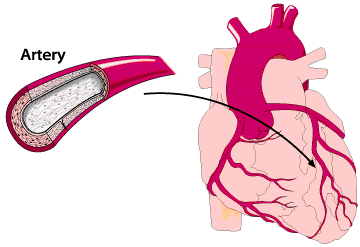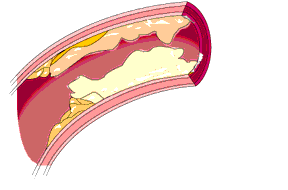 |
Introduction There are several major and minor risk factors that reduce an individual's life span. Some of which are: diet, obesity, stress, heredity, high cholesterol, hypertension, diabetes, smoking, and high cholesterol. All can and do lead to death. It is not a deadly fat but rather a alchool-wax that at times behaves like a fat. Chemistry of CholesterolThe cholesterol molecule is essential to most of the bodily functions and to its chemistry. Cholesterol is needed by the body to make four different things: Estrogen, which is needed by the females, testosterone, needed by males, Vitamin D, and Bile acid. Click on the second image which demonstrates this.
 Click to see full image in a separate window Click to see full image in a separate window
 Click to see full image in a separate window Click to see full image in a separate window
 Click to see full image in a separate window
Athercelorois



Diet and High Cholesterol All cholesterol are found from only
animal tissue and some animal products such as dairy. Organ meats, such as sweetbreads and liver are
heavily concentrated with cholesterol, for example, a 3-ounce piece of liver contains 400 mg of
cholesterol, compared to 60 to 90 mg in a similar amount of lean meat, fish, or poultry. Most Amercians
need to cut their dietary cholesterol in half, and the average intake is 450 to 500 mg for men and about
300 mg for women, however, not all of the cholesterol are absorbed. When cholesterol intake exceeds 500 mg
a day, only about 30% to 35% is absorbed, only 20% to 40% of high cholesterol is taken from dietary sources,
the liver remains the body's major cholesterol source, providing about 1,000 mg a day. In England, Morris and colleagues
conducted an experiment and found out that sedentary bus drivers had much higher rates of heart
attack than conductors who constantly climbed up and down the stairs of London's double-decked buses.
But the drivers also were more likely to be overweight, which had to be accounted for in calculating
the health risk. As Morris and others discovered, the cardiovascular (heart) risks attributed to moderate
obesity or inactivity are mostly indirect because they promote other cardiovascular risk factors such as
hypercholesterolemia, hyptertension, and diabetes. In the absence of other cardiovascular risk factors,
moderate obesity or inactivity impart much less risk for Coronary Heart Diease. Conversely, exercise and
weight loss are beneficial not only in themselves but also in controlling these other risk factors. |
|||